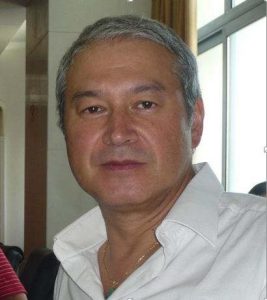The mechanism of the late “Crash” (relapse) linked to intense effort or induced by glucose absorption finally revealed.

By Jean-Marc Sabatier
Long covid sufferers have a dysregulation of the renin-angiotensin system (RAS), notably overactivation of the AT1R receptor (by excess angiotensin 2) and inhibition of the ECA2 receptor, which promote excessive release of extracellular ATP via specific membrane channels. Thus, overactivation of the AT1R receptor leads to ATP leakage, energy
energy debt and an exaggerated inflammatory response.
In response to bodily suffering/distress (microbial infection, oxidative stress, hypoxia, inflammation, tissue damage), our body’s cells release ATP (a form of chemical energy storage) into the extracellular space. This extracellular ATP corresponds to a danger signal (DAMP = Damage-Associated Molecular Pattern), which will (i) trigger an inflammatory response, (ii) recruit immune cells (including macrophages and neutrophils), and (iii) activate purinergic receptors (P2X7 and P2Y) on immune cells. Activation of P2X7 and P2Y purinergic receptors by extracellular ATP in immune cells results in secretion of pro-inflammatory cytokines (including IL-1 beta, IL-6, IL-18 and TNF-alpha), activation of macrophages, lymphocytes and microglial cells responsible for systemic inflammation and/or neuroinflammation, and increased oxidative stress (altering mitochondria, the cells’ energy powerhouses). These inflammatory processes are not immediate: the production and amplification of pro-inflammatory cytokines takes several hours to manifest, which may account for the latency (24 to 48 hours) observed before the onset of relapse symptoms.
Under stress
At the same time, extracellular ATP serves as a messenger for cell-to-cell communication, adapting the body’s response to stress and tissue repair. During suffering/distress, ATP inside cells is released into the extracellular environment via three pathways: vesicular exocytosis (release of ATP-laden vesicles from stressed cells), cell lysis (massive release of ATP during cell death by apoptosis, necrosis or other means), and stress-induced opening of panexin channels (membrane channels allowing the passage of molecules between the inside and outside of the cell) and hemichannel connexins (membrane channels of connexin proteins involved in the transport of metabolites, ions and molecular signals).
Brain fog
Excessive release of extracellular ATP can aggravate inflammation and contribute to the exacerbation of chronic diseases or inflammatory pathologies, as observed in long covid. In summary, excessive extracellular ATP release could explain a late relapse (with a latency period of 24 to 48 hours after intense effort or metabolic stress) of long covid, due to molecular mechanisms linked to cell signalling, inflammation and energy metabolism.
It is notable that the ATP massively released outside the cell is no longer available to ensure “internal” cellular functions, leading to increased cellular energy deficiency and mitochondrial stress unfavorable to ATP production. What’s more, the concomitant activation of immune system cells is highly energy-intensive, aggravating the energy debt. After intense effort (physical or intellectual), the body strives to replenish its stock of ATP molecules, which will be slowed by mitochondrial dysfunction, leading to persistent symptoms of varying severity. Stimulation of P2X7 and P2Y purinergic receptors in immune cells by extracellular ATP exacerbates hypersensitivity (hyperalgesia) and nociception (pain perception). Stimulation of these receptors also disrupts neurotransmission, potentially leading to fatigue and brain fog in the host. These are progressive phenomena with delayed peaks, which can lead to delayed or delayed symptoms.
ATP deregulation
In conclusion, the excessive release of extracellular ATP after intense effort or stress triggers a delayed inflammatory and metabolic cascade, leading to a relapse (called a “crash” by long covids) after 24 to 48 hours, and sometimes even 72 hours. This mechanism is similar to that observed in the post-exertion malaise of myalgic encephalitis (or chronic fatigue syndrome), which is characterized by ATP deregulation and persistent inflammation.
Activation of P2X7 and P2Y purinergic receptors on immune system cells.
P2X7 and P2Y purinergic receptors on immune cells (macrophages, lymphocytes, microglial cells, etc.) are activated by the binding of extracellular ATP. These two receptors are involved in the immune response, inflammation and the regulation of cell metabolism.
Massive entry of sodium and calcium ions
The P2X7 receptor is an ATP-dependent ion channel involved in inflammation (it activates the NLRP3 inflammasome), apoptosis (programmed cell death) and pyroptosis (inflammatory cell death). This ATP-dependent ion channel disrupts cellular homeostasis by allowing massive inflow of sodium and calcium ions, and outflow of potassium ions. The P2X7 receptor can promote oxidative stress and damage mitochondria, while amplifying the immune response associated with danger signals. Thus, in more or less chronic inflammatory diseases of the long covid, potent and prolonged overactivation of the P2X7 receptor – induced by extracellular ATP – can result in chronic fatigue, exacerbated oxidative stress, and persistent inflammation, due to a direct impact on immune signaling and mitochondrial function.
Glucose, energy source for ATP production
Various types of P2Y receptors exist. They are coupled to G proteins and modulate/regulate inflammation and immunity (they act on the response and recruitment of immune cells). They are involved in adaptation to stress. In particular, P2Y2 and P2Y6 receptors stimulate macrophages (innate immunity cells) and promote inflammation.
Link between glucose consumption and the release of extracellular ATP at the origin of the late “crash” in long covid.
There is a link between glucose consumption and extracellular ATP release, which influences inflammation and energy metabolism (via stimulation of purinergic receptors). Indeed, glucose is the main energy source for the production of intracellular ATP via glycolysis in the cytoplasm and oxidative phosphorylation in the mitochondria. It appears that some of the ATP generated is released into the extracellular space via panaxin channels and connexin hemichannels, leading to activation of P2X7 and P2Y receptors. Thus, excess dietary glucose (consumption of sugars, chocolates, cakes, etc.) leads to high intracellular ATP production, and extracellular ATP release which activates P2X7 and P2Y purinergic receptors and stimulates macrophages leading to a persistent inflammatory response. In addition to excessive extracellular ATP release, high glucose consumption is accompanied by mitochondrial dysfunction (reduced ATP production, compensated by anaerobic glycolysis) and lactic acid accumulation. Lactic acid accumulation is associated with energy debt and relapse after exercise (post-exertional malaise).
In conclusion, excess glucose can trigger a late relapse (24 to 48 hours later) due to purinergic receptor activation and energy depletion.
Drugs of potential interest to combat these deleterious effects of extracellular ATP are :
- Probenecid (Pannexin-1 channel blocker). The rare side effects of this drug are possible nausea and/or allergic rash.
- Dipyridamole (inhibitor of ATP and adenosine transport, modulating purinergic signaling). This drug is well tolerated, with possible side effects of hypotension and/or headache.
(Talk to your doctor).

